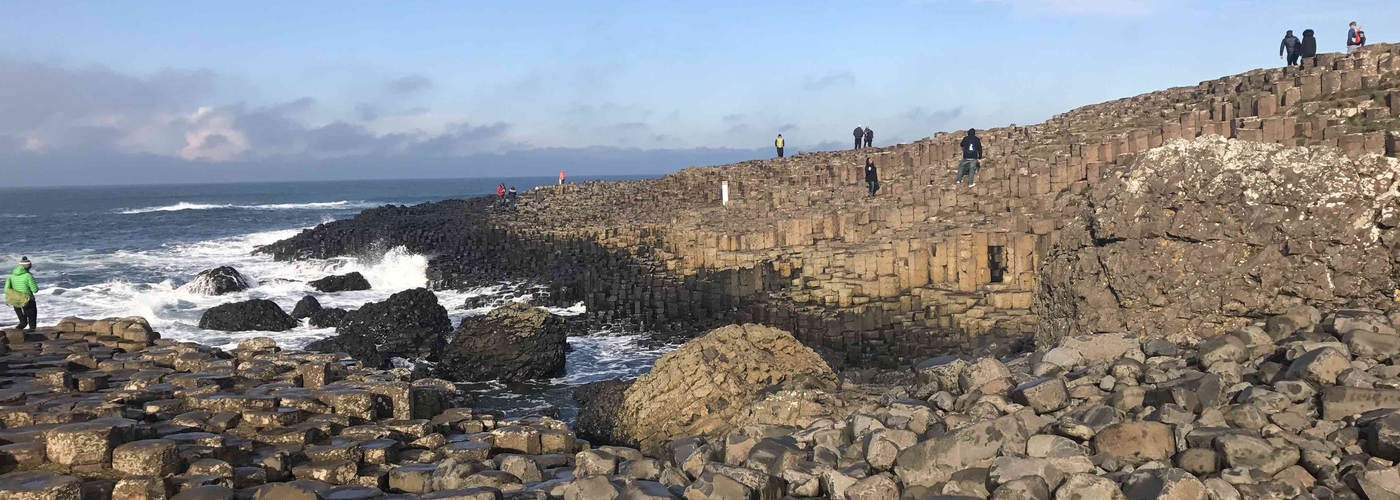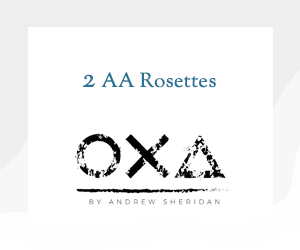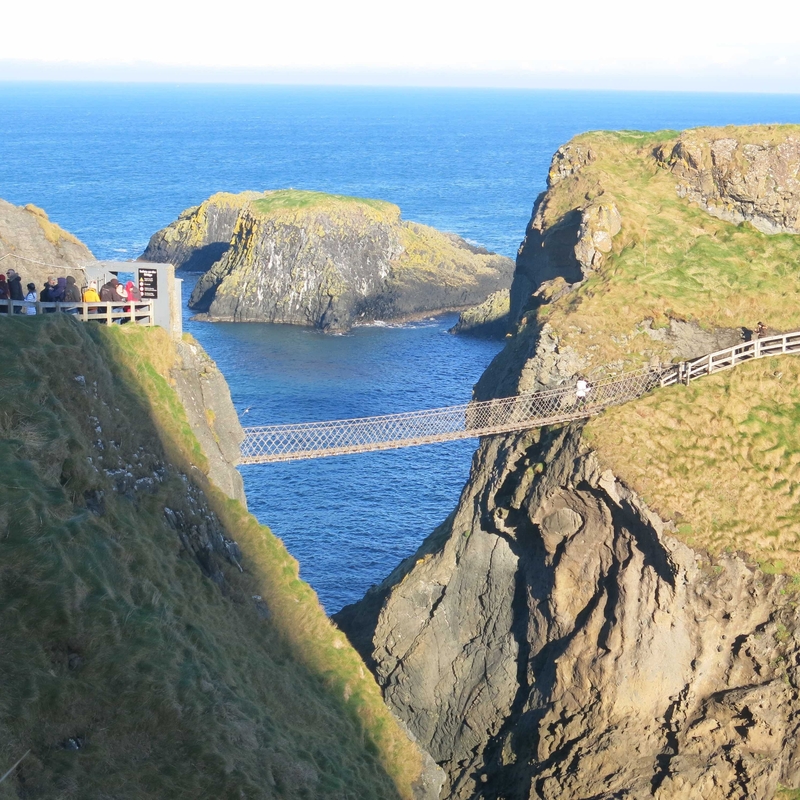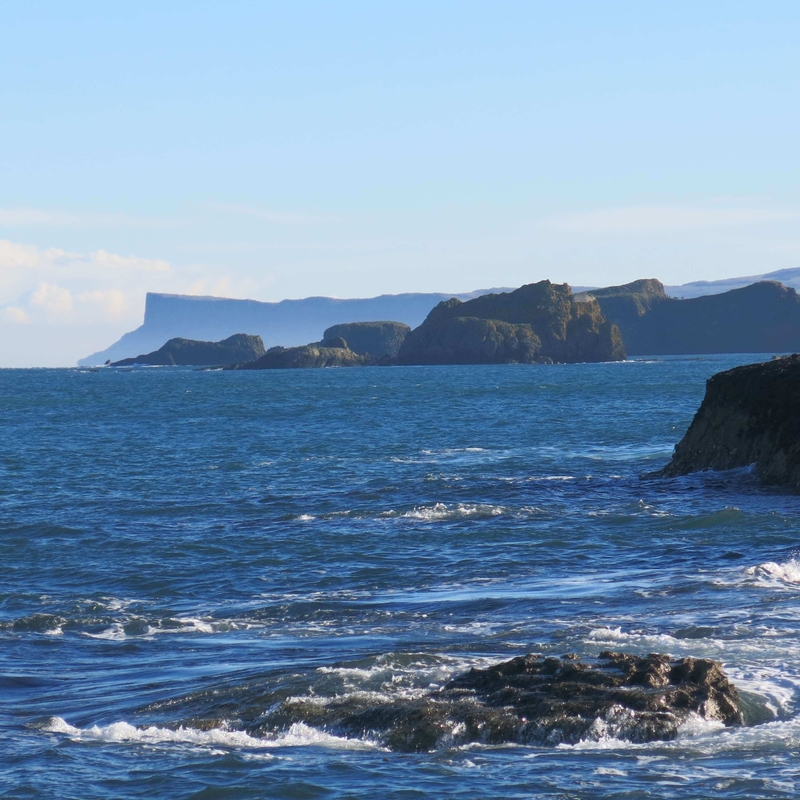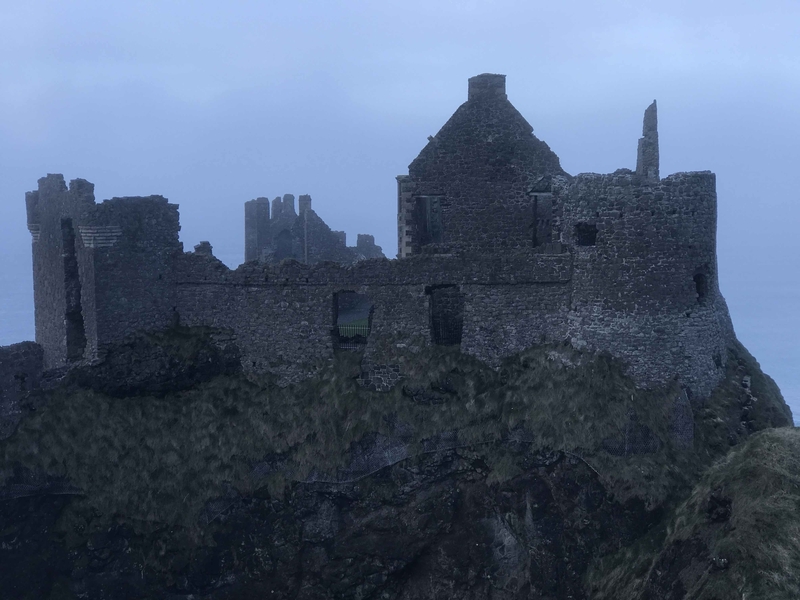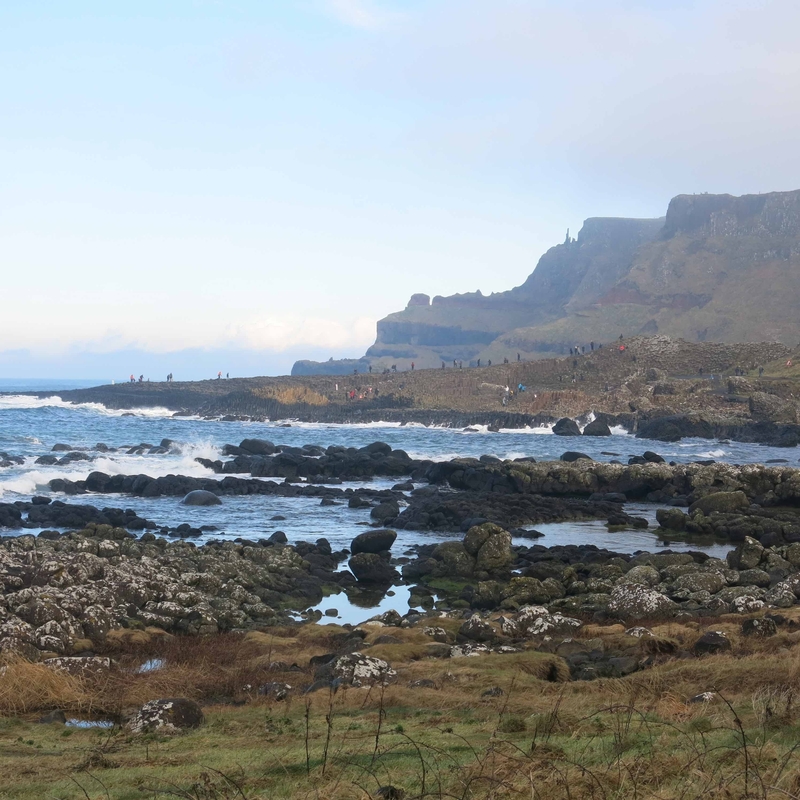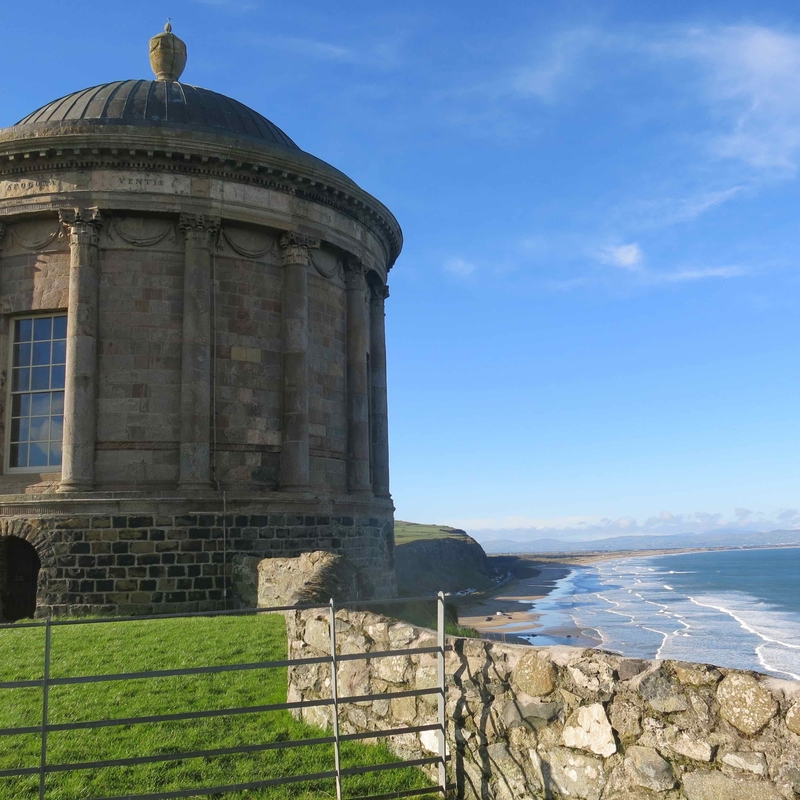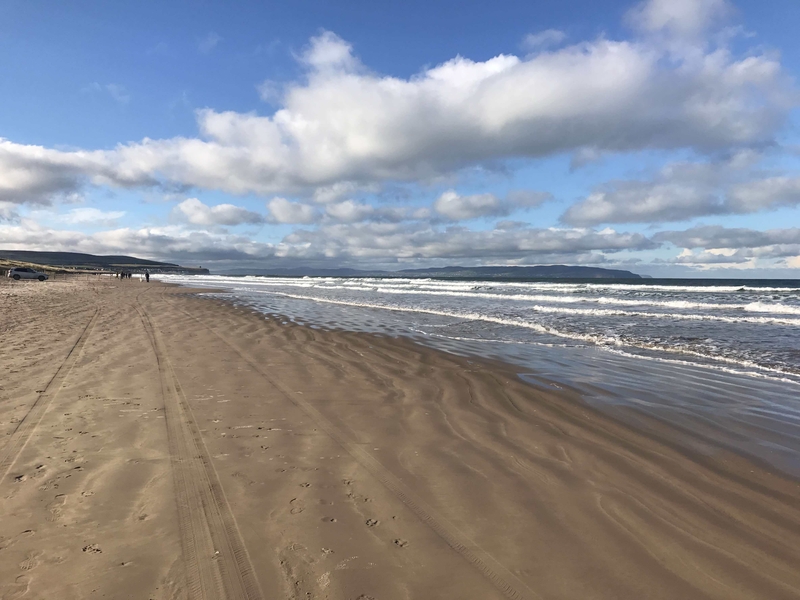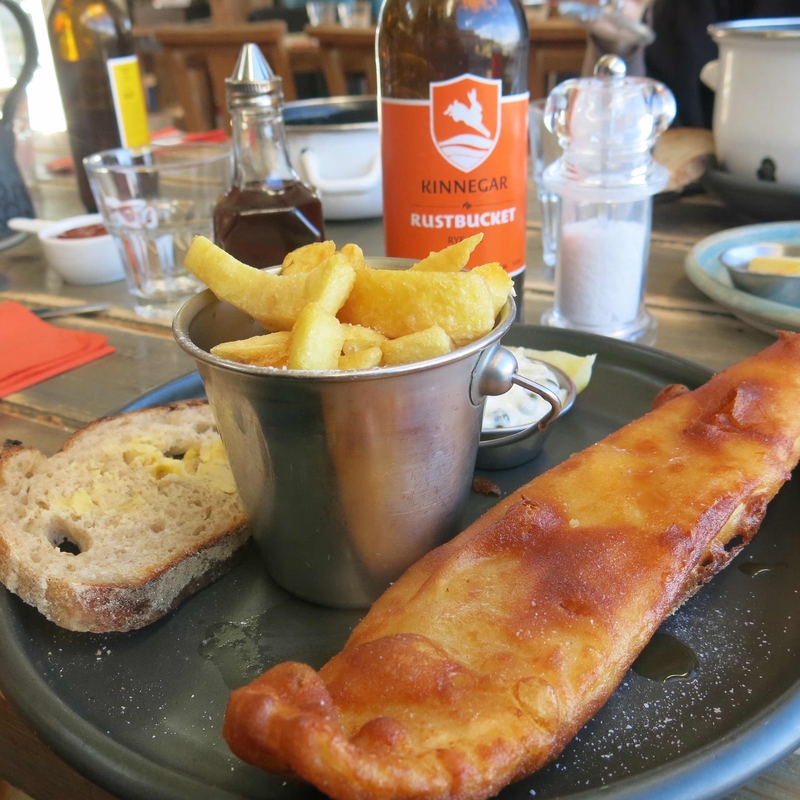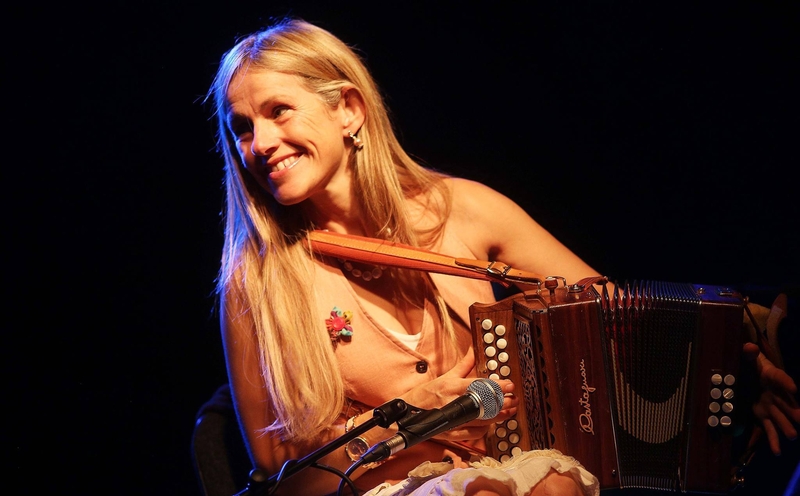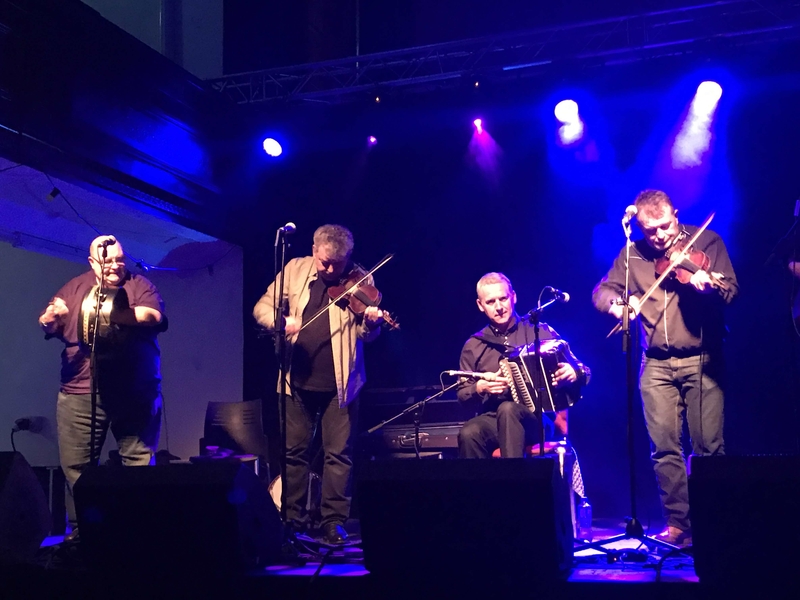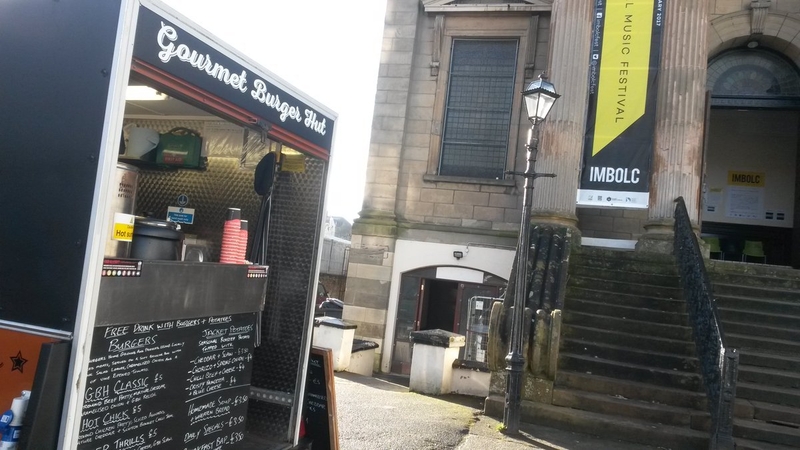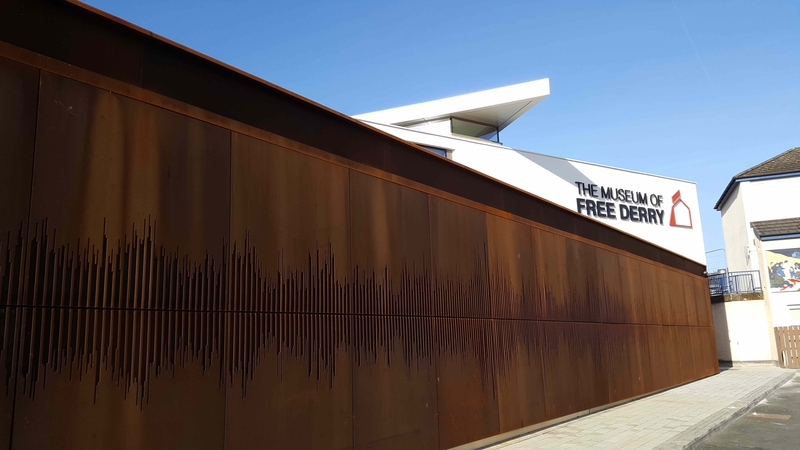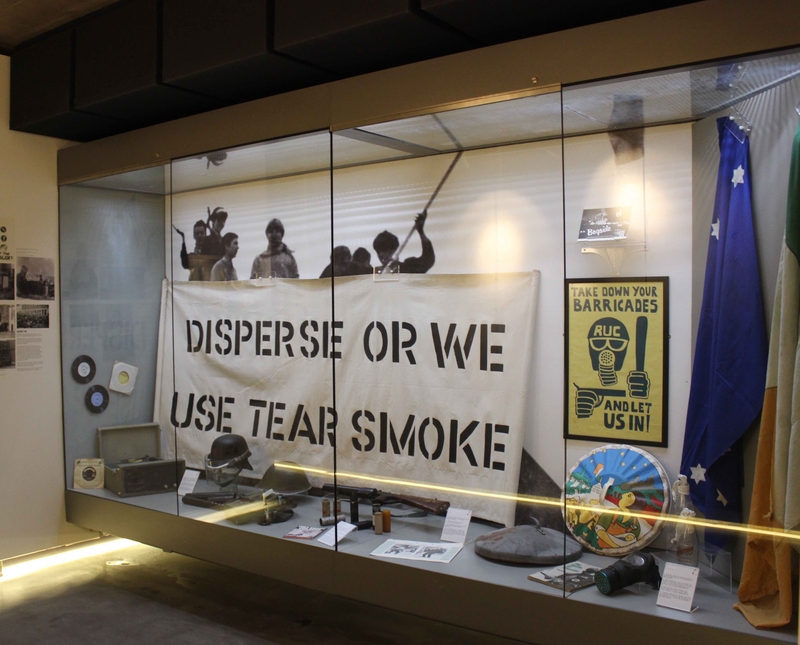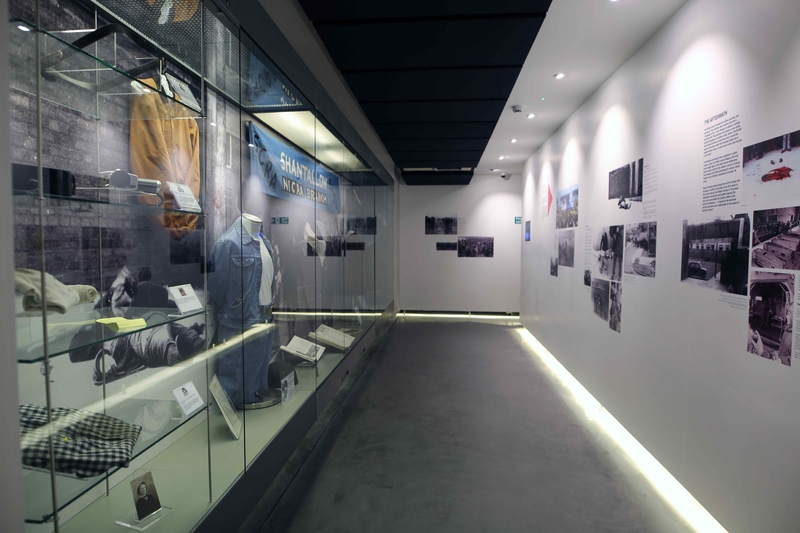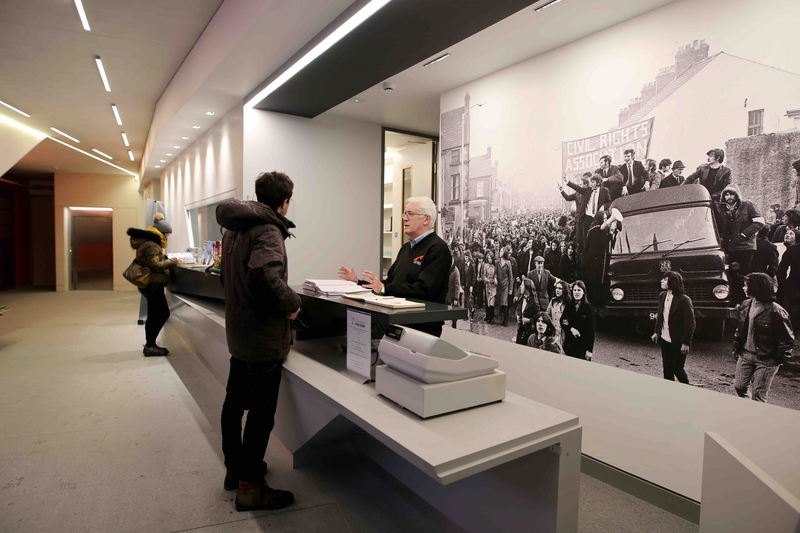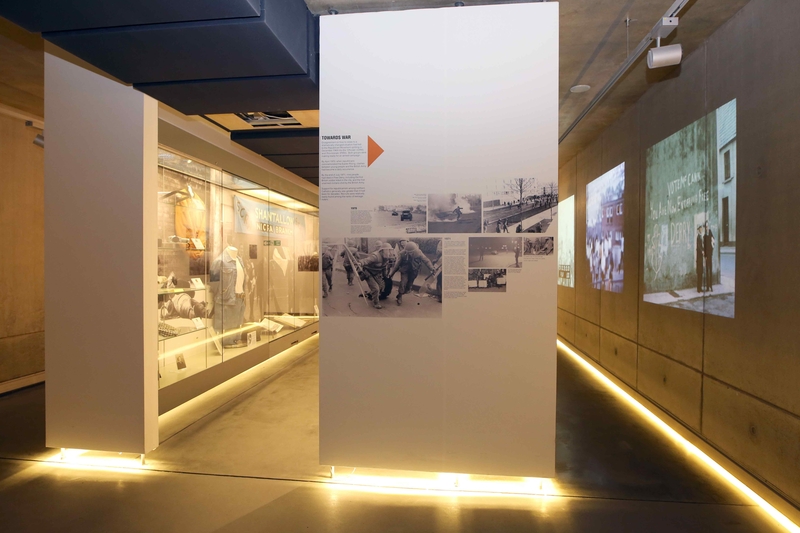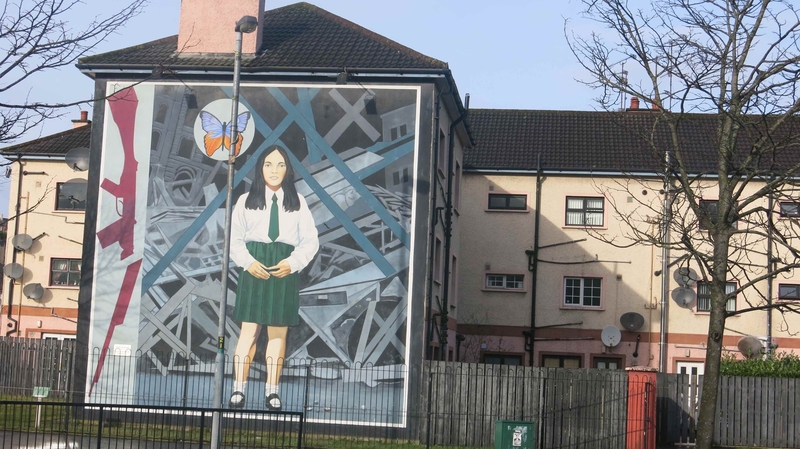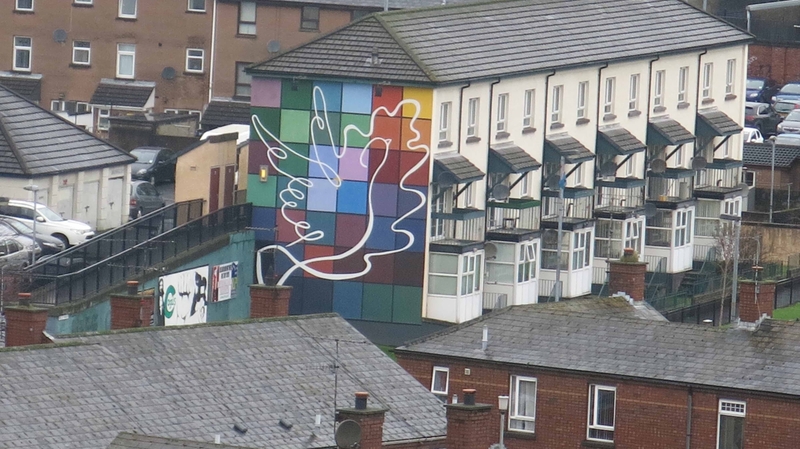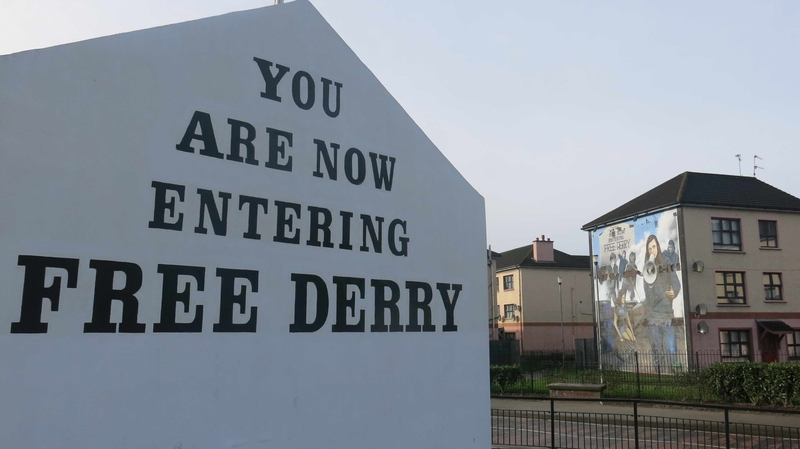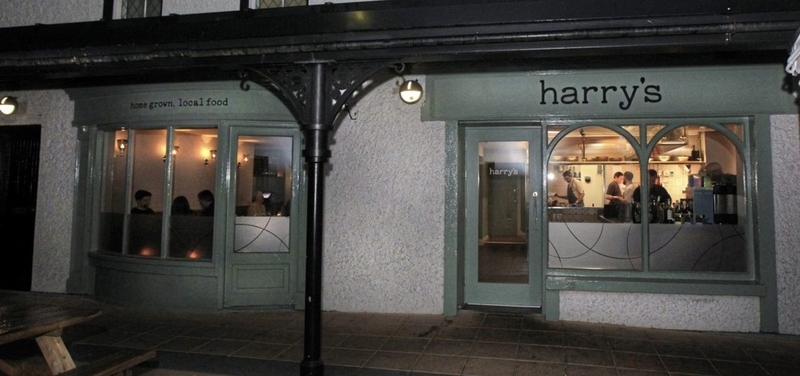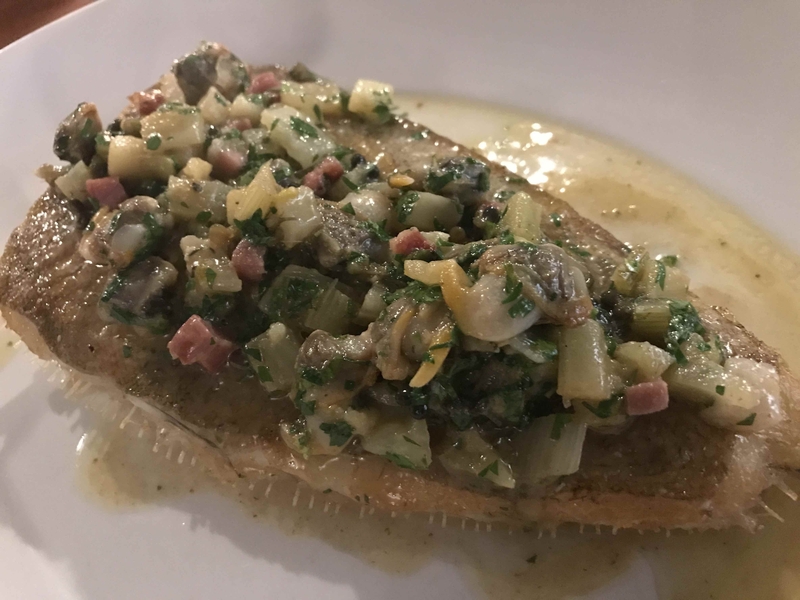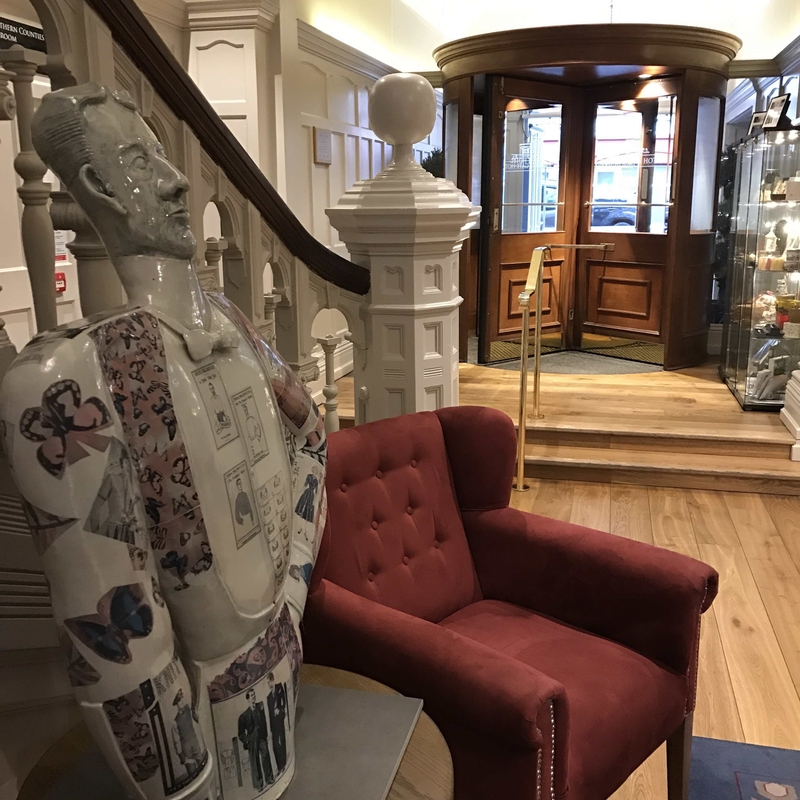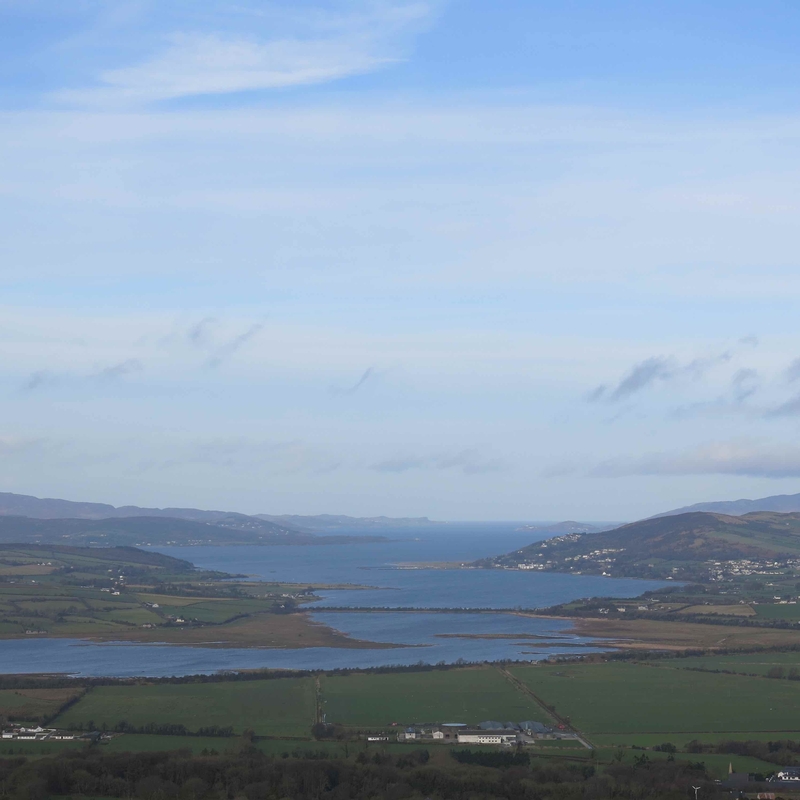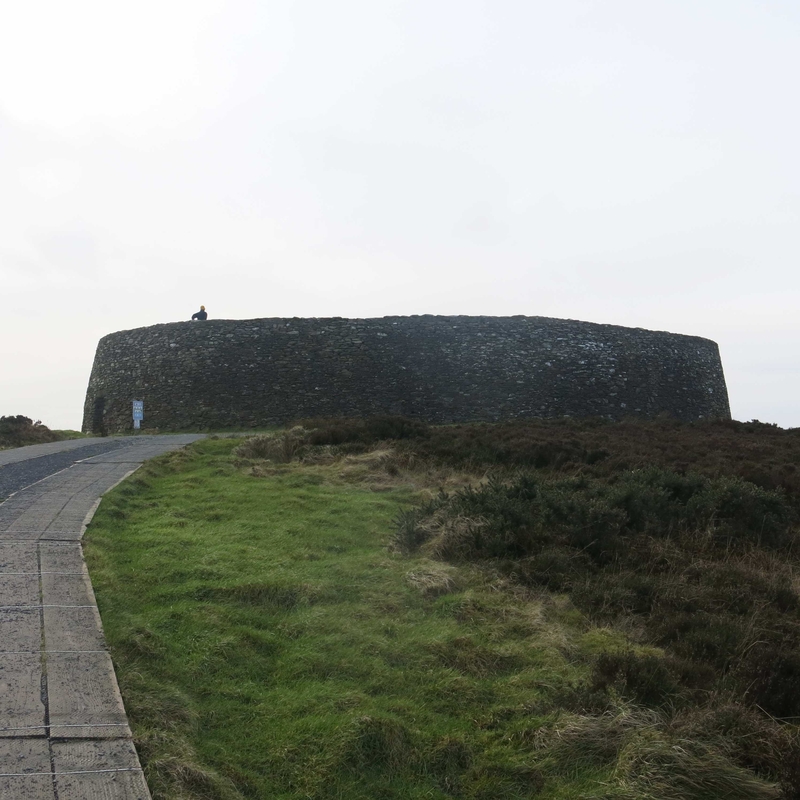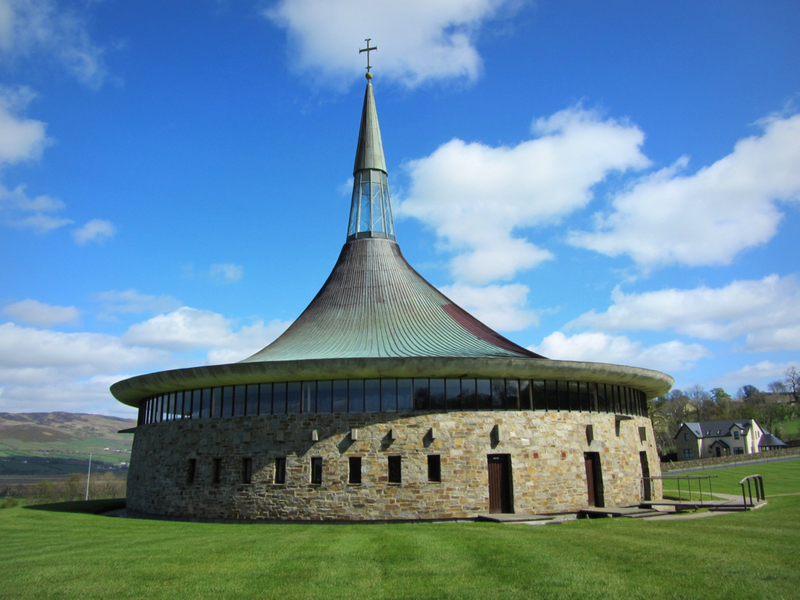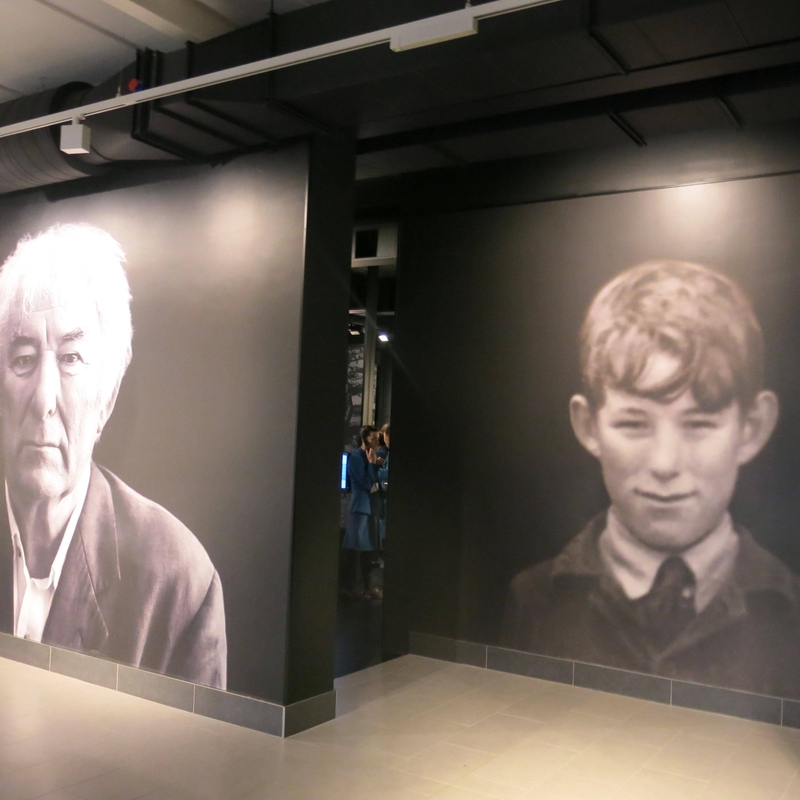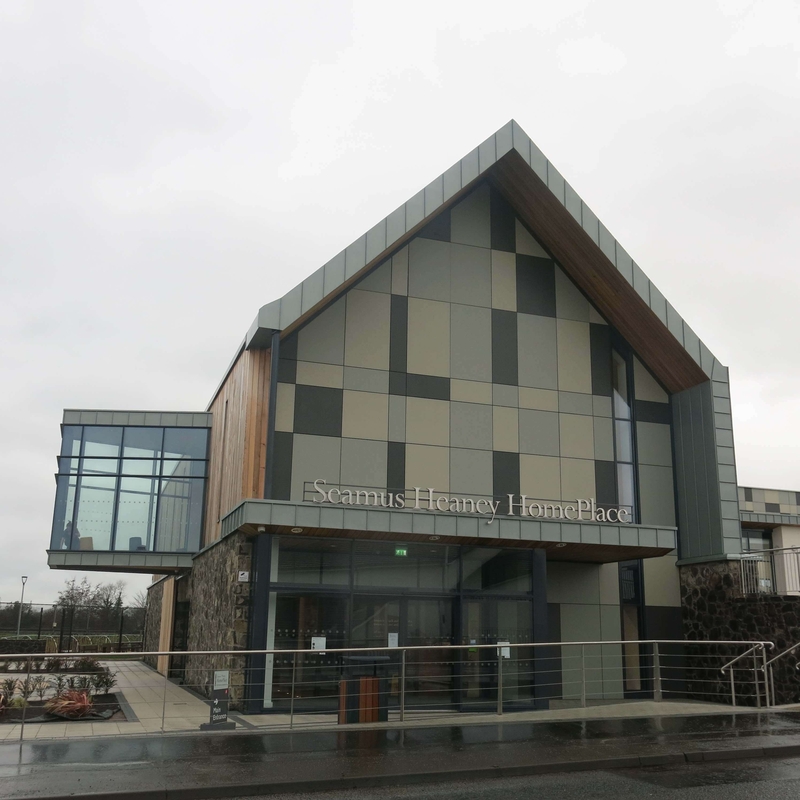The Giant’s Causeway, music and poetry open Neil Sowerby’s eyes
I AM wobbling above the abyss. Waves crash into the rocks 80ft below the Carrick-a-Rede Rope Bridge, not one of the National Trust’s more sedate outings. It’s a 1km clifftop walk to get there from reception, then it’s up to you if you fancy braving the swaying, buckling 60ft stretch of wood slats once used by salmon fishermen to reach a craggy outcrop, these days a scary magnet for giggling selfie snappers.
Megrim sole on the bone, draped with capers, bacon, fennel, and cockles, was one of the finest fish dishes I’ve ever eaten
I chickened out the first time I visited – the £9 a head car parking fee at the nearby Giant’s Causeway equally daunting – but on a misty, bone-chilling day straight out of Game of Thrones I turned warrior. Easy afterwards to pose in front of the gaunt ruin of Dunluce Castle and tackle the icy hairpin road down to Ballintoy Harbour, which you may recognise as the Iron Islands capital Pyke in Thrones. It is a glorious cluster of jagged rocks and raging seas – jewel of the Antrim Coast Road after The Giant’s Causeway World Heritage site.
The Causeway’s huge visitor centre (cost recouped by that exorbitant parking?) is architecturally impressive, paying homage to the huge volcanically created columns that form the Causeway a 15 minute walk away down in the bay. No amount of multimedia interpretation in the centre, though, prepares you for the wonder of those 40,000 interlocking basalt pillars created by lava flow, stepping stones to an ancient world.
The mist had lifted by the time we clambered across them, but it was back with a vengeance when we drove inland to another Game of Thrones tourist honeypot, the haunting canopy of beech trees known as The Dark Hedges (Kingsroad in the series).
All this was an easy day out from our base in Derry. On our drive back we took in Downhill Strand, another GoT location and, perched high above it on the eroding clifftop, Mussenden Temple, a domed rotunda built in the 1780s by Frederick August Hervey, energetic Anglican Bishop of Derry and used as a library. His Palace, set back, is now in ruins, but the NT-run grounds offer a spectacular stroll.
For a longer leg stretch drive across into County Derry and enjoy the magnificent skies and seascape of the vast Portstewart Strand, inevitably restoring yourself at the acclaimed Harry’s Shack casual fish restaurant on the beach.
We were in Derry city for the second year running as guests of their International Music Festival, now rechristened (sic) after Imbolc (pronounced i-MOLG), the pagan festival marking the beginning of spring that was adopted in Gaelic tradition as St Brigid’s Day.
While the 2016 event, at various venues around town, was dominated by the starry Transatlantic Sessions supergroup, the IMBOLC Music Festival was decidedly Celtic in a good way, even a roots superstar such as button accordion player Sharon Shannon happy to brave the dodgy acoustics of the Glassworks, a former Georgian church.
The accompanying craic was equally good in a city that seems to have benefited more than most from Northern Ireland’s post-Peace Process renaissance. As a weekend destination it uniquely meshes laidback fun with an edgier exploration of its recent tragic history. Only Berlin comes close and that’s a metropolis; Derry is a village of close-knit tribes, rubbing its eyes at what the 21st century has brought.
I tried to reflect this in my Beyond The Great Divide: Snapshots of Derry.
The big change a year on is the belated opening of the £2.4million custom-built Museum of Free Derry at Glenfada Park in the Catholic Bogside area close to where its central focus, Bloody Sunday took place in 1972, when British soldiers shot 26 unarmed civilians, killing 14, during a protest march against internment.
Finally there is room to display properly the archive of the civil rights movement – 25,000 individual items from shocking images to bloodstained garments – providing partisan testimony to events to the period known as The Troubles.
£2.4 million has been spent on refurbishment and creating a multi-media experience, and The artwork on the front wall of the museum was created by local artist Locky Morris and is entitled 'We Shall Overcome’. It uses the actual sound waveform of the moment on Bloody Sunday when the crowd sang the civil rights anthem.
Those 21 seconds have been 'cut into' the fabric of the building and are intended to be seen as a "paean to community resistance amidst deadly force”. It is of a piece with the the giant murals on the sides of houses created by brothers Tom and William Kelly and Kevin Hasson, the Bogside Artists.
Here’s the Republican fervour of Bernadette McCluskey (nee Devlin), hero of 1969’s Battle of the Bogside, which spawned the resurgence of the IRA. There’s the most poignant of the paintings – the Death of Innocence, commemorating 14-year-old Annette McGavigan who was killed in crossfire between the British army and the IRA in 1971. She was the 100th victim of The Troubles. To conclude, a dove, eternal symbol of peace, emerges from an oak leaf – Derry’s emblem – on the brightly coloured Peace Mural painted on a Rossville Street gable end over a decade ago after local kids were consulted for their ideas.
We had seen them all at close quarters on one of the Bogside History Tours organised by Paul Doherty, son of Patrick Doherty, a victim of Bloody Sunday. A walking tour costs just £6 (taxi tours £25) – this is not about making profits, it’s about explaining what really happened. Lest we forget.
But, of course, Derry want us to think about its present, too. The reinvention continues, both inside and outside the 17th century City Walls, never breached and surprisingly complete. Last January the Craft Village, a pastiche ‘Dickensian’ complex of craft shops and cafes tucked away off Shipquay Street, seemed a forlorn tourist initiative. Now there’s a huge injection of interest after the arrival of Harry’s Derry, offshoot of the original Harry’s restaurant at Bridgend across the border in Donegal and the aforementioned Harry’s Shack in Portstewart.
We dined there with the group’s driving force Donal Doherty front of house and chef Derek Creagh, once of The Fat Duck, at the stove. Affable Donal introduced us to the eclectic array of local craft beers that have sprung up and Derek served a dish of megrim sole on the bone, draped with capers, bacon, fennel, and cockles, that was one of the finest fish dishes I’ve ever eaten. Even Mr Dickens would have been impressed.
There are several excellent places to eat in Derry, notably Brown’s In Town, buzzing sister restaurant to Ian Orr’s Brown’s up at Waterside, but Harrys has now set the bar high.
Another classy newcomer is the 30-bed four star Bishop’s Gate Hotel, a conversion of a landmark Derry building, the Northern Counties Club (1899). Most of the original features of this former gentleman’s club have been restored – sweeping staircase, inglenook fireplace, decorative panelling and mouldings. Like our own hugely welcoming lodging, The Maldron Hotel, it is conveniently located within the City Walls.
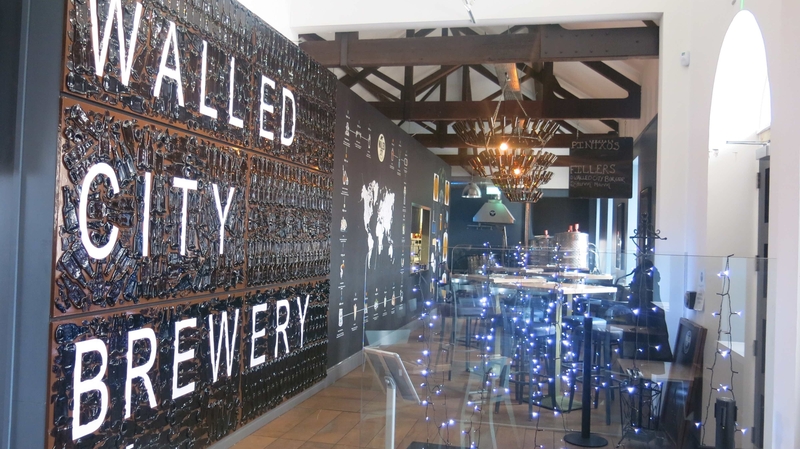
We furthered our exploration of Ireland’s beer culture with a return visit a year on to the Walled City Brewery, where former Guinness brewer James Huey uses a small kit to produce beers just for this venue. There’s the Derry pale ale Boom, an IPA called Stitch and Kicks, a pilsner tribute to Derry’s biggest band, The Undertones. The small plates menu designed by James’s sister wouldn’t be out of place in any beardy metropolitan brewhouse and it’s amazingly here in a converted barracks, reached by The Peace Bridge across the broad River Foyle.
Such hipness takes some getting used to in a city of great traditional Irish pubs (check out madcap Peadar O’Donnell’s on Waterloo Street or the cosier charms of Grand Central
on Strand Road, not far from The Glassworks, where we took in the jolliest of all the IMBOLC concerts. Four Men and A Dog may have been peddling their brand of trad Irish with strains of Southern rock, jazz, blues, bluegrass, polka and country swing for a quarter of a century but there’s nothing stale about them, while their guest, Nathan ‘Crazy Legs’ Pilatzke from Canada took the crowd by storm. A frequent tourer with The Chieftains, he’s a kind of stepdancing Bez on steroids. Kids, don’t try this at home.
So much to occupy our evenings musically, so it was good to drive out into the country during the day. The Republic is minutes away down the N19 and Donegal is a wild and beautiful region, but its maze of country roads and switchback inlets devours the time you have.
After getting delightfully lost around the Fanad Peninsula we retrenched back to two amazing destinations under 10 miles west of Derry city. Burt Church, actually on the N13, rejoices in its status as Ireland’s ‘Building of the Century’ and it lives up to that national poll verdict. Built in the 1960s, it takes its pagan inspiration from the nearby Grainan of Aileach ringfort and the prehistoric tumulus of Newgrange (another World Heritage site, in the Republic.
Circular in shape, it features a beautifully curved plastered ceiling and Cubist-inspired stained glass windows. The stones used on the outside of the church are cobblestones salvaged from the Derry Docks.
Driving up to the windy hilltop fort you recognise the debt, once you’ve taken in the stupendous panorama from 250m above sea level – Lough Foyle, Lough Swilly and the far reaches of the Inishowen Peninsula are spread out before you.
Its origins date back to pre-Celtic 1700 BC and legend has it the giants of Inishowen are lying sleeping underneath, so when a sacred sword is removed they will spring to life, reclaiming their ancient lands.
What better time to pay our respects then than at Imbolc?
A Tale of two Seamuses
WHEN Nobel laureate Seamus Heaney died in 2013 Ireland lost its favourite literary son. Our Digging for Poetic Gold in Seamus Heaney Country two years later took in the Co Derry farming lands where his genius was rooted. In the village of Bellaghy, near where he was born in 1939, the old police station site was earmarked for a lasting memorial – a museum dedicated to the man and his work.
On this latest trip the Seamus Heaney HomePlace was up and running, a spacious Scandinavian-style building offering a series of superbly conceived written, photographic and video exhibits charting his rise from farmer’s son to global icon.
There is even a ‘creative zone’ where visitors are invited to write and draw their own creations or ideas, inspired by Heaney, while the Helicon Theatre perform space is dedicated to various artistic interpretations of the work.
No poet in my knowledge has ever been granted such a museum in his honour, yet the vast collection of images and artefacts, including a recreation of his Dublin study, never strays into hagiography. Like the man, a class act. Well worth visiting.
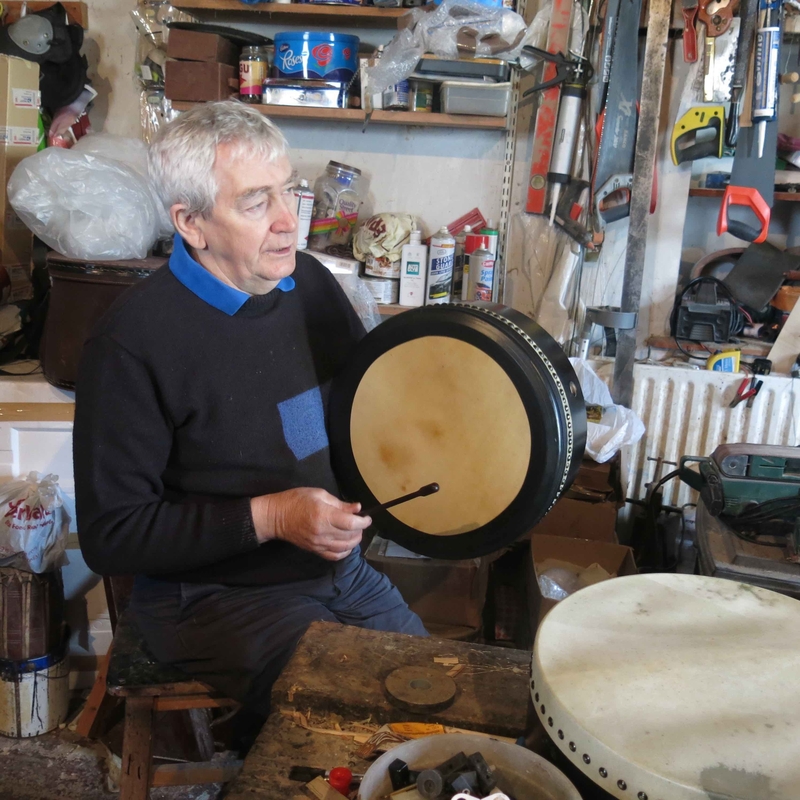
En route from Ballaghy to Derry city we dropped in on another Seamus – legendary bodhrán maker Seamus O’Kane, who lives in a remote cottage high in the Sperrin Mountains and has been making these taut goatskin frame drums for 48 years.
Hundreds are stacked in his workshop and all over the cramped cottage where he and his wife raised 19 children. Now the great and good of the traditional music fraternity will have to settle for the product of lesser hands – Seamus is retiring from bodhráns to tinker with improving the harp.
Ours was a private visit to a very private man, whose drum sounds, like Heaney’s carefully hewn words, sing of an inspired Ireland that has always danced to its own tune. That’s the inspiration for the likes of Derry’s Imbolc Festival.
Factfile
Neil Sowerby stayed at The Maldron Hotel, 7-17 Butcher Street, Derry, BT48 6HL. 028 7137 1000.
For full tourism information: Visit Derry.
Derry’s only Blue Badge Guide is Michael Cooper and he’s happy to organise personalised trips across the Province. Highly recommended.
For lots more events and places to visit in Northern Ireland visit www.discovernorthernireland.co...
He flew with easyJet from Manchester to Belfast International and hired a car (Derry is a 90 minute drive away), but there are direct services into Derry Airport .
Neil Sowerby parked at Manchester Airport. For full details of parking there visit this link.





